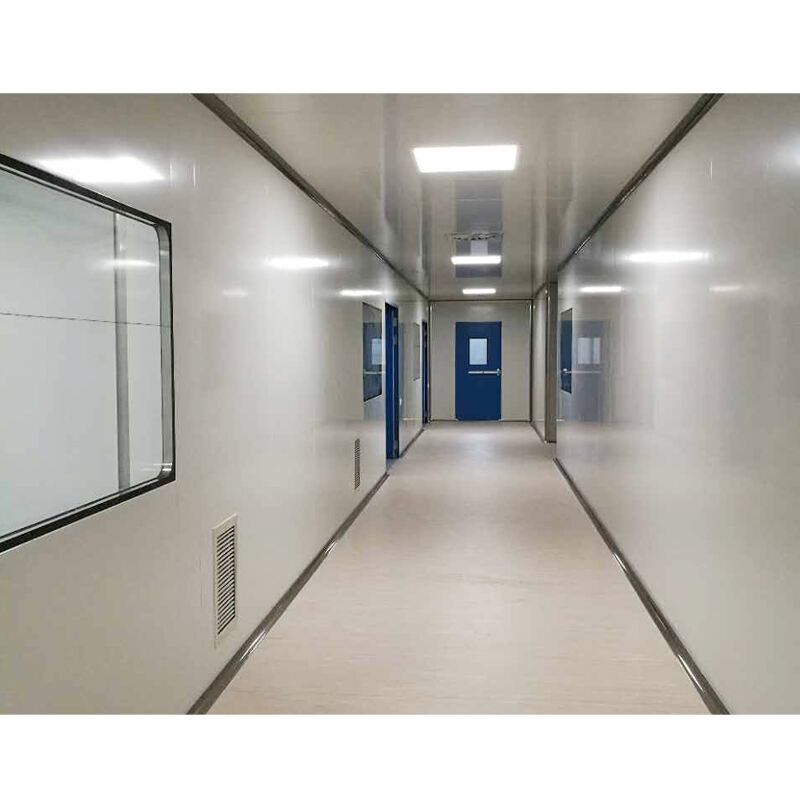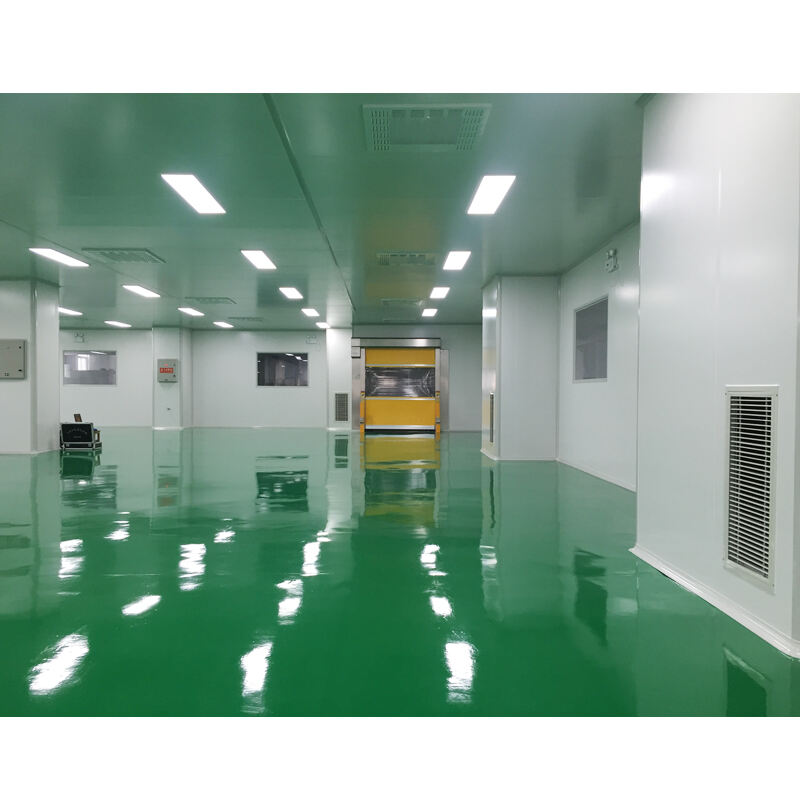How to Design a Clean Air System for Laboratory Applications
Laboratories handle sensitive materials, conduct precise experiments, and work with potentially hazardous substances, making air quality a critical factor in their operation. A well-designed clean air system protects both personnel and experiments by controlling contaminants, maintaining stable conditions, and ensuring proper ventilation. Whether for chemical analysis, biological research, or pharmaceutical development, the clean air system serves as the backbone of a safe and reliable laboratory environment. This guide outlines the key steps and considerations in designing a clean air system tailored to laboratory applications.
What Is a Clean Air System for Laboratories?
A clean air system in laboratory settings is a specialized network of components designed to control air quality by removing contaminants, regulating airflow, and maintaining stable environmental conditions. Unlike general ventilation systems, laboratory clean air systems focus on:
- Removing airborne particles (dust, microbes, aerosols)
- Containing and exhausting hazardous fumes or gases
- Maintaining consistent temperature, humidity, and pressure
- Preventing cross-contamination between laboratory zones
- Protecting workers from exposure to harmful substances
These systems combine filtration technologies, airflow controls, and monitoring devices to create controlled environments that meet industry standards (such as ISO 14644 for cleanrooms or OSHA guidelines for laboratory safety). The design varies based on the laboratory’s specific needs, whether handling biological agents, volatile chemicals, or sensitive electronic components.
Key Factors in Designing a Laboratory Clean Air System
1. Identify Laboratory Requirements and Classification
The first step in designing a clean air system is to define the laboratory’s purpose and required air quality standards. Different applications demand different levels of air cleanliness:
- Biological Laboratories: Need protection against microbial contamination. Clean air systems must filter out bacteria, viruses, and spores, often requiring HEPA filtration and negative pressure to contain pathogens.
- Chemical Laboratories: Focus on removing toxic fumes and volatile organic compounds (VOCs). These clean air systems prioritize efficient exhaust systems and chemical-resistant materials.
- Pharmaceutical Laboratories: Require strict control over particles and microbial levels to meet Good Manufacturing Practice (GMP) standards. Higher air change rates and ISO 5–7 classification may be necessary.
- Electronics or Material Science Laboratories: Need ultra-low particle counts to prevent damage to sensitive components. These clean air systems often use ULPA filters and laminar airflow.
Consult industry standards to determine the required classification, which specifies maximum allowable particle counts (e.g., ISO 5 allows no more than 3,520 particles of 0.5μm or larger per cubic meter). This classification dictates the system’s filtration, airflow, and pressure requirements.
2. Design Airflow and Pressure Control
Proper airflow is essential for maintaining air quality and preventing cross-contamination in laboratories. Key considerations include:
-
Air Change Rate (ACH): The number of times the air in the laboratory is replaced per hour. Higher ACH reduces contaminant buildup. For example:
- General laboratories: 6–12 ACH
- Biological safety labs: 12–24 ACH
-
Cleanrooms for pharmaceuticals: 20–60 ACH
Calculate ACH based on room volume and the clean air system’s supply airflow rate.
- Directional Airflow: Design airflow to move from clean to dirty areas. In biological labs, air should flow into the lab from adjacent spaces and exhaust directly outside to contain pathogens. In cleanrooms, unidirectional (laminar) airflow ensures particles are swept away from work surfaces.
-
Pressure Differentials: Maintain pressure gradients to prevent air from flowing from contaminated to clean zones. For example:
- Biological safety cabinets and containment labs use negative pressure (air flows in, not out).
-
Pharmaceutical cleanrooms use positive pressure (air flows out, preventing external contamination).
Pressure differences (typically 10–25 Pascals) are controlled by balancing supply and exhaust airflow rates.

3. Select Filtration Systems
The filtration component is the heart of any clean air system, responsible for removing contaminants from the air. Choose filters based on the laboratory’s contamination risks:
- Pre-filters: Capture large particles (5μm and larger) to protect more expensive filters from clogging. Used in the initial stage of the clean air system to extend the life of downstream filters.
- HEPA (High-Efficiency Particulate Air) Filters: Remove 99.97% of particles 0.3μm or larger, essential for biological labs, hospitals, and pharmaceutical facilities. HEPA filters are critical in clean air systems for protecting against microbes and fine particles.
- ULPA (Ultra-Low Penetration Air) Filters: Even more efficient than HEPA, removing 99.999% of particles 0.12μm or larger. Used in electronics labs or ultra-clean environments where sub-micron particles could damage sensitive equipment.
- Chemical Filters: Adsorb gases, fumes, and VOCs using activated carbon or chemical-impregnated media. Required in chemical laboratories to remove hazardous vapors (e.g., solvents, acids) from the air stream.
- Gas Phase Filtration: For specialized applications, such as removing ammonia or formaldehyde, use targeted chemical filters designed to neutralize specific gases.
Install filters in strategic locations: supply air vents, exhaust systems, and within equipment like biological safety cabinets. Regular filter replacement is critical to maintain the clean air system’s efficiency.
4. Design Exhaust and Ventilation Systems
Laboratories often generate hazardous fumes that require immediate removal. The clean air system must include dedicated exhaust systems:
- Fume Hoods: Connect to the clean air system’s exhaust to remove chemical vapors at the source. Ensure fume hoods have sufficient face velocity (typically 0.4–0.6 m/s) to contain fumes and prevent leakage.
- Exhaust Stacks: Position exhaust outlets away from air intakes and occupied areas to prevent re-entry of contaminants. Stacks should be tall enough (minimum 3 meters above roof level) to disperse fumes safely.
- Variable Air Volume (VAV) Systems: Adjust airflow rates based on demand (e.g., when fume hood sashes are opened or closed). VAV systems optimize energy use while maintaining proper ventilation, reducing the clean air system’s operational costs.
- Emergency Exhaust: Include backup fans or redundant systems to ensure continuous exhaust during power outages, critical for laboratories handling highly toxic substances.
5. Integrate Temperature and Humidity Control
Stable temperature and humidity prevent condensation, protect equipment, and ensure consistent experimental conditions. The clean air system should maintain:
- Temperature: Typically 20–24°C (68–75°F) for most laboratories. Some applications (e.g., cell culture) require tighter controls (±1°C).
- Humidity: 30–60% relative humidity. Low humidity can cause static electricity (harmful in electronics labs), while high humidity promotes microbial growth (risk in biological labs).
Use HVAC components integrated with the clean air system, such as humidifiers, dehumidifiers, and precision temperature controls. Install sensors to monitor conditions continuously and adjust the system automatically.
6. Include Monitoring and Alarm Systems
A reliable clean air system requires real-time monitoring to ensure it operates within specified parameters. Key monitoring features include:
- Particle Counters: Measure airborne particle concentrations to verify compliance with cleanliness standards. Integrate with the clean air system to alert staff if particle counts exceed limits.
- Pressure Sensors: Track pressure differentials between rooms. Alarms trigger if pressures deviate from setpoints, indicating potential cross-contamination risks.
- Airflow Meters: Monitor supply and exhaust airflow rates to ensure proper ACH and pressure balance.
- Filter Status Indicators: Track filter loading and alert maintenance teams when replacement is needed, preventing efficiency drops in the clean air system.
- Emergency Alarms: Sound alerts for critical issues like power failures, filter breaches, or hazardous gas leaks, allowing rapid response to protect personnel and experiments.
7. Consider Material and Layout Compatibility
The clean air system’s performance depends on the laboratory’s physical design and materials:
- Sealing and Construction: Use airtight construction with sealed joints to prevent air leakage. Avoid porous materials (e.g., wood) that can trap contaminants; instead, choose smooth, non-porous surfaces (e.g., stainless steel, epoxy resin) that are easy to clean.
- Equipment Placement: Position workstations away from air vents, doors, or windows that could disrupt airflow. Ensure fume hoods and safety cabinets are integrated with the clean air system’s exhaust to maximize efficiency.
- Flexibility for Future Changes: Design the clean air system with modular components to accommodate lab rearrangements or changing research needs. Include extra ductwork capacity or filter slots for easy upgrades.
Real-World Examples of Laboratory Clean Air System Designs
Biological Safety Level 3 (BSL-3) Lab
A BSL-3 lab researching infectious diseases requires strict containment. Its clean air system features:
- Negative pressure (-25 Pa relative to adjacent areas) to prevent pathogen release.
- 12–15 ACH with HEPA filters on both supply and exhaust air.
- Dedicated exhaust fans with HEPA filters before discharge to the outside.
- Pressure monitoring with alarms to alert staff of pressure failures.
Pharmaceutical Compounding Lab
A lab producing sterile medications needs ISO 7 classification. Its clean air system includes:
- Positive pressure (+15 Pa) to prevent external contamination.
- 30 ACH with HEPA-filtered supply air and unidirectional airflow over work surfaces.
- Temperature control at 22±1°C and humidity at 50±5% to protect drug stability.
- Continuous particle counting and real-time monitoring linked to a central control system.
Chemical Research Lab
A lab handling volatile solvents uses a clean air system designed for fume control:
- VAV fume hoods connected to high-capacity exhaust systems.
- Carbon filters in the supply air to remove external pollutants.
- 8–10 ACH with 100% outside air intake (no recirculation) to prevent chemical buildup.
- Gas detectors linked to emergency exhaust activation for hazardous leaks.
FAQ
How often should filters in a laboratory clean air system be replaced?
Pre-filters are replaced every 1–3 months, HEPA filters every 1–3 years, and chemical filters every 6–12 months (depending on usage). Monitor pressure drops across filters—replace when resistance increases significantly.
What is the difference between positive and negative pressure in clean air systems?
Positive pressure means air flows out of the lab, preventing external contaminants from entering (used in cleanrooms). Negative pressure means air flows into the lab, containing internal contaminants (used in biological or chemical containment labs).
Can a clean air system be retrofitted into an existing laboratory?
Yes, but retrofitting requires assessing the existing structure for airflow capacity, sealing leaks, and modifying ductwork. Modular clean air system components (like portable HEPA units) can provide temporary solutions during upgrades.
How much energy does a laboratory clean air system consume?
Clean air systems are energy-intensive, accounting for 30–50% of a lab’s energy use. Energy-efficient designs (VAV systems, high-efficiency motors, heat recovery) can reduce consumption by 20–30%.
What standards must a laboratory clean air system meet?
Compliance depends on the application: OSHA for worker safety, ISO 14644 for cleanrooms, NSF/ANSI for biological safety cabinets, and GMP for pharmaceutical labs. Local building codes also regulate ventilation and exhaust requirements.
Table of Contents
- How to Design a Clean Air System for Laboratory Applications
- What Is a Clean Air System for Laboratories?
- Key Factors in Designing a Laboratory Clean Air System
- Real-World Examples of Laboratory Clean Air System Designs
-
FAQ
- How often should filters in a laboratory clean air system be replaced?
- What is the difference between positive and negative pressure in clean air systems?
- Can a clean air system be retrofitted into an existing laboratory?
- How much energy does a laboratory clean air system consume?
- What standards must a laboratory clean air system meet?

